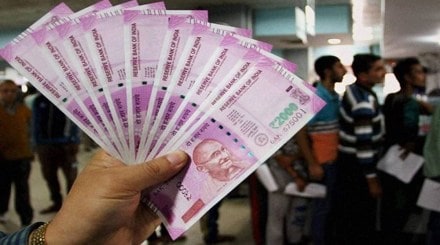Are you still in possession of the old Rs 2,000 notes and contemplating a straightforward method for their exchange? If so, there is good news for you. The Reserve Bank of India (RBI) has recently provided clarification regarding the process designed to assist citizens who still hold Rs 2,000 notes. The central bank has detailed several options available for the exchange of these notes.
According to the RBI, apart from depositing the banknotes at any RBI branch, individuals can also utilize the note exchange service at post offices throughout the country. Those in possession of currency can dispatch Rs 2,000 notes from any post office in India directly to one of the 19 RBI issue offices for deposit into their bank accounts. Here are the steps you need to follow.
How to Exchange Rs 2,000 Notes through Post Offices
The RBI has clarified recently that individuals or entities can send Rs 2,000 notes for exchange through any post office, a provision that has been effective since October 9, 2023. This extension is particularly beneficial for those who may not have immediate access to an RBI office or prefer a simpler process closer to their location. However, Rs 2,000 notes are still valid for transactions across the country, even as the RBI continues its phased withdrawal.
Also Read: Senior Citizen Fixed Deposits with highest returns in November – Compare and choose the right one
1. Download the Application Form: Visit the RBI website and find the “Forms-Others” section on the homepage. Download and fill out the application form for exchanging Rs 2,000 notes.
2. Attach Required Documents: Along with the application form, you will need to submit a copy of an Officially Valid Document (OVD). Accepted OVDs include:
- Aadhaar Card
- Passport
- Voter ID
- Driving License
- NREGA Card
- PAN Card
- Identity card issued by a government department or public sector unit
Additionally, include a copy of your bank account details, which can be a recent bank statement (showing account details) or the first page of your passbook.
3. Submit at Any Post Office: Once your documents are ready, take them to any post office in the country along with your Rs 2,000 notes. The post office will send your submission to one of the 19 designated RBI issue offices for processing.
4. Credit to Bank Account: The RBI will process the exchange and directly credit the equivalent amount to your specified bank account in India.
Adhil Shetty, CEO of Bankbazaar.com, says, “The RBI has simplified the exchange of Rs 2,000 notes, making the process more accessible to citizens. With the facility to submit and send notes to the ‘RBI Issue Offices’ through any post office in the country, the central bank aims to make the currency exchange convenient. For those still holding onto these notes, this process ensures a secure, direct credit to their bank account, supporting easy transition.”
The Rs 2,000 note was introduced in November 2016 as a response to the currency shortage after Rs 500 and Rs 1,000 banknotes were demonetised. With the economy’s demand for currency returning to normal levels, and smaller denominations becoming adequately available, the RBI stopped printing Rs 2,000 notes in 2018-19.
In May 2023, the RBI announced the gradual withdrawal of Rs 2,000 notes from circulation, encouraging people to exchange or deposit them. By October 7, 2023, when the exchange facility at bank branches concluded, the RBI reported that over 98% of the Rs 2,000 denomination notes had been returned, reducing the outstanding value in circulation to Rs 6,970 crore from Rs 3.56 lakh crore in May 2023.
